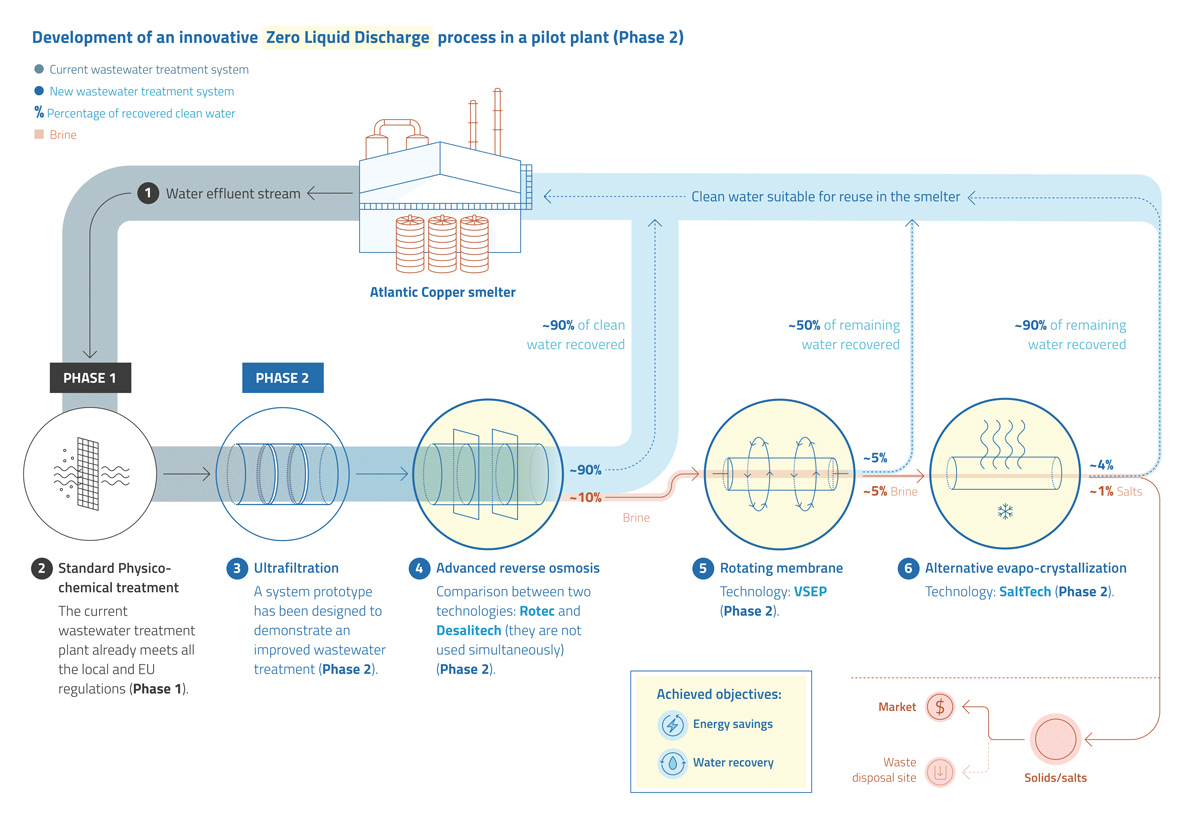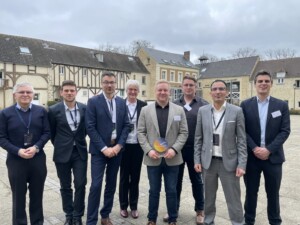Recovery of Effluent Discharge for Sustainable Copper Processing in Europe
EIT RawMaterials supported innovation project RED_SCOPE (Recovery of Effluent Discharge for Sustainable Copper Processing in Europe), led by Atlantic Copper, has developed a new process maximising water recovery in a copper smelter. The preliminary results of the innovation project were presented with the pilot prototypes performance installed in the Atlantic Copper factory to demonstrate the technical and economic feasibility of a new process. The results were presented in a workshop held on 7 February 2019 in Huelva, Spain.
The aim of RED_SCOPE (Recovery of Effluent Discharge for Sustainable COpper Processing in Europe) is to asses the technical and economic feasibility of a new process to maximise wastewater recovery of a copper smelter. The project led by Atlantic Copper will enable optimal use of raw materials within Europe and will contribute to the European Commission’s current strategy on the Circular Economy.
As part of the RED_SCOPE innovation project, a near zero liquid discharge (NZLD) pilot plant was designed, installed and operated to assess the feasibility of recovering most of the aqueous effluents generated in the Metallurgical Complex of Atlantic Copper. The recovered water, of adequate quality to be used as process water, can be sent back to the factory, reducing the consumption of fresh water and, therefore, the Water Footprint. In addition, as a consequence of the recovery of clean process water, a dry residue in the form of saline crystals is generated, which is currently under evaluation.
SUEZ has developed the design of the water resources optimisation project. The project began in 2017 with pre-feasibility studies and laboratory tests followed by the design of the pilot plant carried out in 2018. Furthermore, different technologies were installed along with the pilot tests carried out for five months. By 2019, the implementation study and the final validation of the project were planned. Moreover, the IVL team worked on the characterisation and study of the possible recovery of the waste generated in the new process.

RED_SCOPE Innovation Project developing an innovative Zero Liquid Discharge process in a pilot plant
Socioeconomic and environmental impact of the RED_SCOPE project
The RED_SCOPE innovation project demonstrates an improved, integrated NZLD process for treating the wastewater stream, which reduces by 99% the water in the current discharge and reduces the freshwater consumption. As a consequence of this BAT implementation for wastewater treatment, the process would be environmentally sustainable.
The RED_SCOPE process is a key asset for the raw materials sector due to:
- Recycling water to reduce consumption: There is a concern about water scarcity problems and over-exploited aquifers in the EU.
- Boosting raw material supplies in the EU: Copper demand is expected to continue growing as a consequence of emerging technologies.
- Adapting to future EU regulations: Copper smelters should be prepared to guarantee compliance with future requirements.
Benefits of implementing the new RED_SCOPE process:
- Sustainable circular economy: Through this new process, 99% of water is reused, thus saving energy and reducing environmental impact. The remaining solids or salts could be potentially recycled.
- Saving energy by minimising brine generation: This system achieves a more sustainable treatment of copper due to the reduction in brine generation. The smaller amount of brine obtained, the less energy is used to treat it.
- Boosting sustainability: RED_SCOPE team has achieved a more sustainable copper production to secure the sector’s future.
RED_SCOPE partnership:
- Atlantic Copper, Spain (Lead Partner)
- IVL Swedish Environmental Research Institut, Sweden
- SUEZ Environment Company, France
- Aquatec, Proyectos para el Sector del Agua, S.A.U, Spain
- Cetaqua, Centro Tecnológico del Agua, Fundación Privada, Spain




